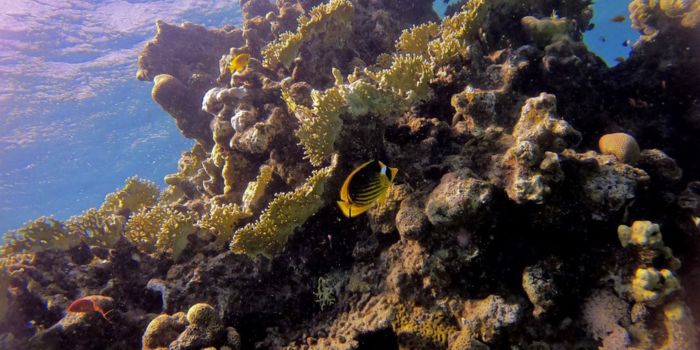Coral bleaching: Worry as fish populations decline at the Coast

Scientists attribute the bleaching, which has lowered fish populations, to soaring temperatures at the Coast.
Kenya's Coast is witnessing a worrying decline in fish populations and tourism activities because of the widespread bleaching of corals in the Indian Ocean, the second most extreme event of its kind since 1998.
Scientists attribute the bleaching to soaring temperatures in the region.
More To Read
- Extreme weather affects mental health: what vulnerable women in Kenya told us
- Kenya launches Africa’s first REDD+ registry in landmark UK partnership to boost climate action
- New study warns the world is running out of time to avoid the worst impacts of climate change
- "Existential threat": Ruto calls for joint global action on climate change
- Nairobi chosen as African Headquarters for Global Climate Adaptation Centre
- What to expect from COP29 climate talks in Baku, Azerbaijan
Corals are colourful because of microscopic algae called zooxanthellae. The World Wildlife Fund (WWF) explains that bleaching happens when they lose their vibrant colours and turn white.
"The leading cause of coral bleaching is climate change. A warming planet means a warming ocean, and a change in water temperature—as little as 2 degrees Fahrenheit—can cause coral to drive out algae. Coral may bleach for other reasons, like extremely low tides, pollution, or too much sunlight," it says on its website.
Fisherman Juma Ali noted that this event is "devastating" for the coastal marine ecosystem.
"The corals are not just pretty to look at. They are vital for the survival of fish and other marine life," he said.
The crisis underscores the urgent need for global cooperation in coral reef conservation.
"This is not just a local issue; it is a global one. We need to work together to address climate change and protect our precious marine ecosystems," said John Kimani, an environmental science professor advocating for sustainable development in coastal regions.
 Striated surgeonfish and royal angelfish swim by a coral reef along Egypt’s southern Red Sea coast. (Photo: File/AFP)
Striated surgeonfish and royal angelfish swim by a coral reef along Egypt’s southern Red Sea coast. (Photo: File/AFP)
As efforts continue to mitigate the impacts of bleaching, communities and governments have been urged to prioritise conservation efforts.
"We cannot afford to ignore the signs of environmental distress any longer. It is time for decisive action," asserted Kassim Ahmed, a local community leader involved in marine conservation initiatives.
A recent report by the National Oceanic and Atmospheric Administration (NOAA) and the International Coral Reef Initiative (ICRI) states that the world is experiencing its fourth global coral bleaching event, the second in the last 10 years.
The report says this event is exacerbated by prolonged increases in ocean temperatures and has been extensive across the Atlantic, Pacific, and Indian oceans.
David Obura, the chair and director of Coastal Oceans Research and Development in the Indian Ocean (CORDIO) East Africa, said: "With record temperatures across oceans and continents since April 2023 and continuing into 2024, the current spread of bleaching across our region is not a surprise."
The bleaching event has been confirmed in at least 53 countries and territories, including the Caribbean, the Eastern Tropical Pacific, Australia's Great Barrier Reef, and large areas of the South Pacific.
In the Western Indian Ocean, observations from Kenya, Tanzania, the Comoros, the Seychelles, Mauritius, and Reunion have confirmed widespread bleaching.
However, scientists say there is a glimmer of hope as coral bleaching does not inevitably lead to their death.
"If conditions improve and stressors diminish, bleached corals can recover, maintaining the crucial ecosystem services that reefs provide," explained Africa Swaleh Aboud, a coral reef scientist a at CORDIO EA.
He said the global coral bleaching event is a critical indicator of the need for global and regional cooperation in managing ecosystems.
Top Stories Today















































